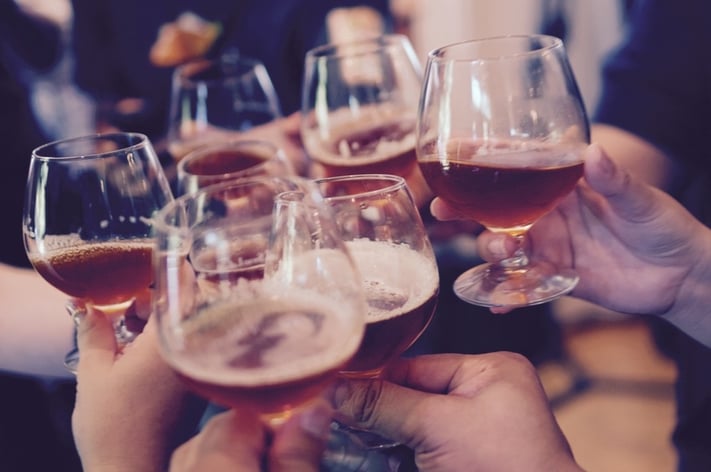
As long as humans have been around, there has been beer. Or at least it seems that way. According to BeerAdvocate, the ancient Sumerians likely discovered beer by accident nearly 13,000 years ago. What a magnificent accident that turned out to be!
Keeping track of all the different kinds of beer in the world can be a full-time job. As enjoyable as beer can be to drink, it’s important to know what separates one kind of beer from another.
Every beer tells a distinct story – from where it originated, to its creation process and even how it gets its color. But with so many beers available to us, how can we decipher between all of them? So much beer yet so little time!
Beer is mainly made up of four ingredients – barley, yeast, hops, and water, with each ingredient impacting every beer style differently. On the most basic level, beers can be separated into two main categories – Ales and Lagers. Ales are the oldest style of beer. They are created in warmer temperatures using yeast that ferments at the top of the fermentation tank. Lagers, on the other hand, are made in much colder temperatures with yeast that sinks to the bottom. While ales are commonly full and rich, lagers tend to be more crisp and clean.
To go a step further, both ales and lagers can be broken down into smaller subcategories. Thirsty yet?
Ales
Pale Ale – Pale Ales are generally English or American in style. Both styles are golden or copper in color, and have a medium hop aroma and flavor. Pale Ales will have a fairly strong fruity aroma. The beers’ hoppiness is often balanced well with a subtle to medium malty flavor.
India Pale Ale – More commonly referred to as an IPA, India Pale Ale originated in Britain. English brewers used a large amount of hops to preserve this beer on long voyages to places like – you guessed it – India. American IPAs have a stronger hoppy flavor that can vary depending on the part of the country where the beer is produced. Many IPAs exhibit a citrusy flavor and high bitterness.
Brown Ale – As the name suggests, these beers are brown in color with a strong malty flavor. Low in hops, Brown Ales boast a fuller body from roasted malts with notes of coffee, chocolate, caramel or a number of other flavors.
Stout – When you think of Stouts, Guinness, a dry stout, might come to mind. Stouts are a deep black color, low on hops and taste like malt, chocolate, or caramel among other things.
Porter – Similar to Stouts, Porters are dark in color. What sets them apart is the unroasted malt flavor. These beers often have a coffee or chocolate-like sweetness to them. Porters are lighter than stouts in color and body.
Wheat – These flavorful beers are pale in color. Wheat beers commonly have a very fruity aroma and taste. Wheat beers, like Hefeweizen, often appear cloudy or hazy because of unfiltered yeast.
Lagers
Pale Lagers – Pale lagers, including American Lagers, are widely consumed because of their smooth, light, and refreshing nature. These beers are highly carbonated, but low in hops and malt.
Pilsners – The most popular style of beer is a member of the pale lager family. Pilsners can be higher in hops, but low in alcohol content.
Bock – This German-style lager is sweet with a heavy malt and darker brown color. Its brethren, Doppelbocks, are a stronger version with a fuller body.
Oktoberfest and Märzens – Like its namesake, this style of beer flows heavily during the Oktoberfest months in the fall. Oktoberfest beers are normally brewed in the spring, or March as you may have guessed if you know German, and are stored until autumn. This style of dark lager has a toasted flavor to add to its full body.
Amber/Red Lagers - These beers are darker in color than pale lagers and feature a smooth malt flavor.
Cider – While not technically a beer, hard cider has seen its popularity skyrocket over the last several years, especially amidst the rise of gluten free diets. Using the juice of fermented apples, hard cider is dry and crisp with a light body.
How Do You Know What Glass to Serve With Each Beer?
Just as each type of beer is unique, so too are the glasses every beer deserves. A beer glass can influence both the aroma and the taste of beer. The proper glass will bring out the best in your beer. Discover the types of glasses that can bring out your craft beer’s potential with our Birrateque Guide to Craft Beer Glassware.





